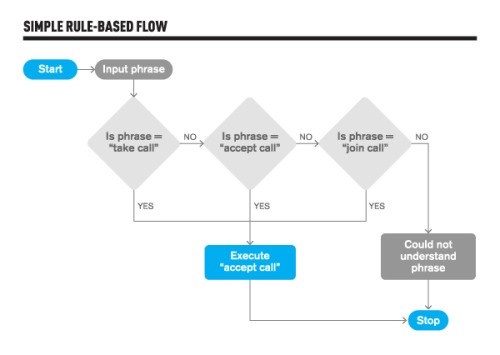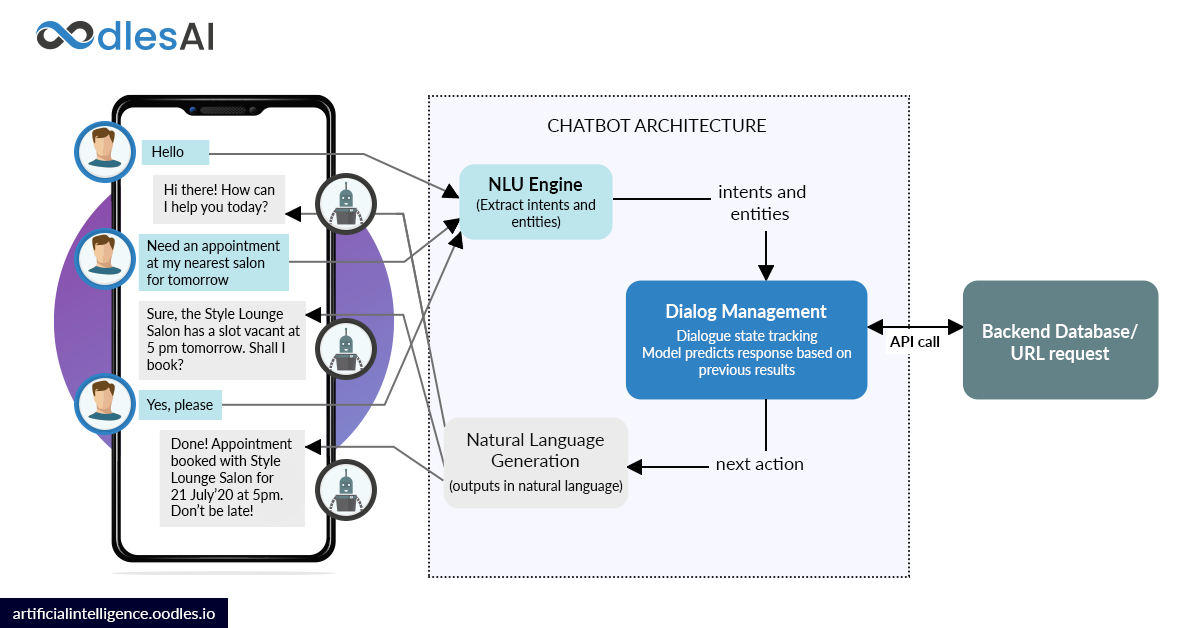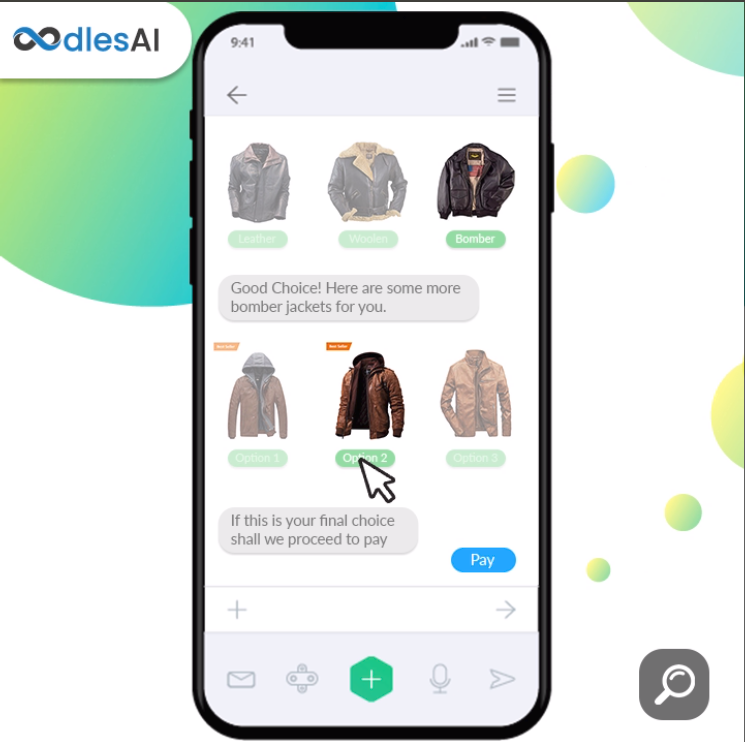Chatbot Development in 2020: An Expert Guide to Tools & Techniques
Sanam Malhotra | 20th July 2020

What originated as an added business feature soon turned into an essential component of growth strategies. Chatbot Development in 2020 is not only a growth propeller but also serves for social causes like spreading COVID-19 awareness. Whether business development, marketing, or public safety, AI-powered chatbots will capture major customer traction with its engaging and interactive capabilities.
In this edition, we, at Oodles, as a well-positioned Chatbot Development Company share an in-depth guide to building an effective enterprise chatbot.
Understanding a Chatbot and its Types
A chatbot is a computer software program designed to simulate intelligent conversations with humans. Chatbot interactions can be triggered through written or voice-based interfaces integrated across websites, mobile apps, eCommerce portals, and social media channels. Trained to address routine and dynamic user inferences, a chatbot represents a customer support executive providing quick and effective solutions to user queries.
Based on the training approach, chatbots can be classified into two major types-
1) Rule-based Chatbots
Rule-based or decision-tree chatbots follow a pre-defined conversational flow defined by rules in ‘If-this, then-that’ fashion. These rules are written using AIML (Artificial Intelligence Markup Language) modules that fetch responses from a database or predesigned script. For this reason, rule-based chatbots are considered more effective for handling FAQs and routine queries such as checking account balance, weather forecasts, etc.

However, rule-based chatbots demonstrate a limited understanding of users’ context and intent, making it difficult for enterprises to engage users with dynamic interactions.
2) Artificial Intelligence Chatbots
AI-powered or conversational AI chatbots are the evolved version of rule-based chatbots that work on machine learning algorithms. Contrary to the rule-based approach, conversational AI is powered by user data, intents, and past interactions used for training the chatbot. That’s the reason why AI chatbots are also termed as ‘self-learning chatbots’ for they constantly improve their cognitive abilities while learning from interactions.

As visualized in the image, machine learning-based chatbot employs NLU (Natural Language Understanding) engines to gauge user inputs and intent. Whereas, the output is powered by a software process called NLG (Natural Language Generation) that converts data into the natural language.
We, at Oodles, as a well-experienced Artificial Intelligence Development Company, present a comprehensive guide to developing enterprise-grade conversational AI interfaces. It will enable you to build effective and intelligent virtual assistants that not only match user needs but also scale business revenue.
4-Step Expert Guide to Enterprise Chatbot Development in 2020
Step 1: Identifying Your Chatbot’s Objective
The foremost step to building a conversational AI chatbot is to identify its primary objective or purpose. Does your chatbot need to address routine customer queries or would it resolve more complex problems?
Will the chatbot mimic a customer support’s script or will it incorporate advanced features like lead generation, product recommendations, etc.
What is important to note is the availability of data to support the chatbot’s intellect. If your business does not maintain a rich history of customer interactions, it might be easier to deploy rule-based chatbots. They can effectively handle routine tasks such as gathering customer information, subscription messages, etc. Businesses with an extensive data repository, however, should invest in expert models that trigger human-like conversations and can even automate critical decisions.
Also Read- Building Healthcare Chatbots for COVID-19 Awareness and Diagnosis
Step 2: Understanding Audience Needs
The second step toward enterprise chatbot development in 2020 should be to step into your user’s shoes. Why would your customer need a chatbot on your website or mobile app? Will they try to understand your line of services or raise a complaint about the incorrect order received? Answering such questions would help the product development team to design a well-structured conversational flow useful for users and the business.
Given that customer service is the new marketing, enterprises should essentially consider user needs, preferences, and pain points for chatbot development.
Also, take into consideration the future probability of scaling your chatbot. Rule-based chatbots are harder to scale as compared to AI-powered chatbots that can self-learn and enhance interactions.
Also Read- How Banking Chatbots are Transforming Financial Services
Step 3: Designing the Conversational Flow
The most interesting phase of chatbot development in 2020 is conversational or chat flow that the virtual assistant would trace. A chatbot’s conversational flow can be classified into ‘structured conversations’ and ‘unstructured conversations’. The rule-based approach follows a structured conversational flow featuring close-ended inputs in the form of bubble choices, menu, forms, etc. Contrarily, AI chatbots trail an unstructured flow, prompting human-like interactions with elements of humor, sarcasm, judgment, and more.
An effective way to design a chatbot script is to rotate a questionnaire within your organization to understand the diversity of answers.

An AI-chatbot backed by recommendation algorithms can map user preferences during the interaction to make personalized suggestions and offers.
Close-ended conversations are easier to deploy and design using a set of rules, while open-ended conversations require machine learning algorithms. For instance, prompts like ‘Would you add a cappuccino to your meal?’ will fetch answers in either yes or no. Questions like, ‘Customers ordering similar meals usually add-up Cappuccino or Ice tea. What would you like to have?’ would keep the users engaged.
Also Read- Social Media Chatbot Development & Integration: Enhancing Customer Relations
Step 4: Choosing the Right Chatbot Development Framework or Programming Language
This is the most critical step toward an effective and efficient chatbot development in 2020. Currently, the market is overflowing with various chatbot development tools and frameworks such as Google-owned DialogFlow, IBM’s Watson, Facebook’s Wit.ai, and more.
To understand how these platforms work and how well they fit into your business needs, read this article, “5 Top-notch Chatbot Development Frameworks for Enterprises”.
For enterprises packed with robust coding experience, Python is the most preferred programming language for chatbot development in 2020. Python is a clear winner for chatbot development for various reasons. Not only it is the most developer-friendly language but the core NLTK (Natural Language Toolkit) is also written in the very language. Also, major chatbot hosting platforms such as Facebook Messenger, Slack, and Telegram are welcome to Python code more than ever.
Also Read- Significance of AI for Small Businesses: Preparing for the New Normal
Oodles AI: Your Enterprise Partner for Chatbot Development in 2020
We, at Oodles AI, have witnessed virtual assistants making remarkable strides across industries to streamline customer interactions and enhance experience significantly.
Our experiential AI team is adept at understanding core business needs, matching it with seamless conversational interfaces using effective chatbot frameworks.
Our competencies under chatbot and virtual assistant development expands to-
a) Rule-based FAQ and customer support chatbots
b) Domain-specific chatbots for healthcare, banking, eCommerce, and other businesses
c) Chatbot integration across FB, Slack, and other social media platforms
d) Voice-controlled virtual assistants for Google Home, Amazon Alexa, wearable gadgets, and other IoT devices
e) Self-learning chatbots backed by NLP and machine learning algorithms, and more.
Team up with our Chatbot Development Team to deploy conversational AI for amplifying business growth with seamless customer services.



